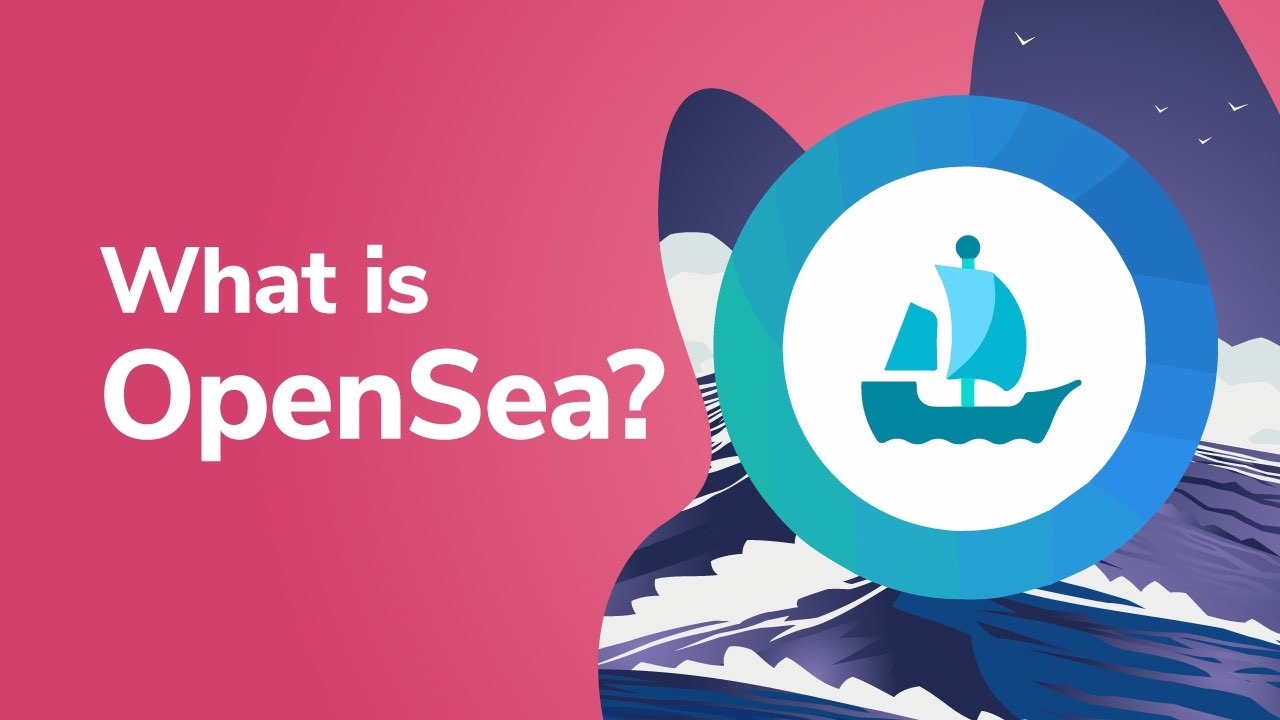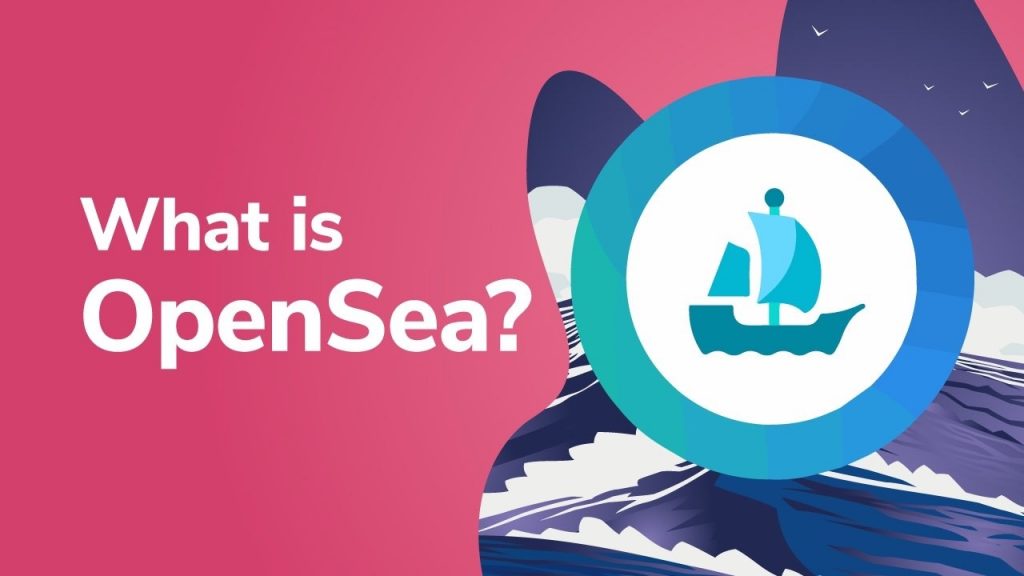
The first decentralized NFT marketplace was OpenSea, founded in January 2018. So, you can see how new NFT marketplaces are. Founders Alex Atallah and Devin Finzer decided the ecosystem was ready for an NFT marketplace after seeing CryptoKitties in action.
Since then, OpenSea has experienced significant growth, as have NFTs in general. Some big-name players like Mark Cuban, Gary Vaynerchuk, and Chamath Palihapitiya have recently expressed interest in the space. Furthermore, Logan Paul even announced the launch of his first NFT on Twitter, which went on to net him over $3.5 million.
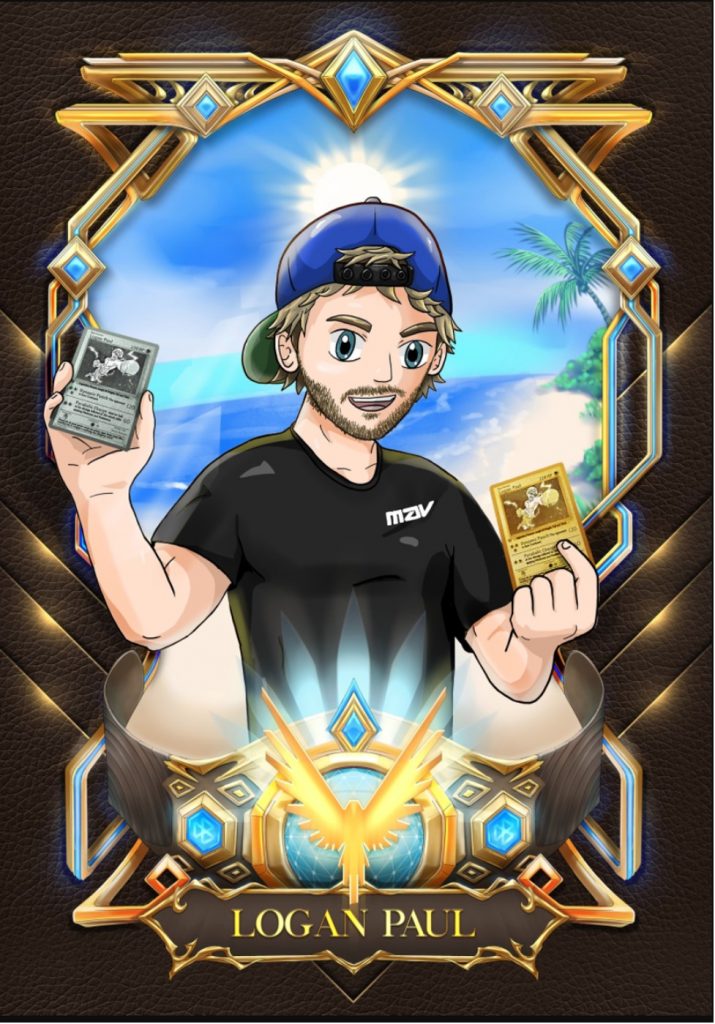
These kinds of ringing endorsements only added fuel to the fire that was already burning bright before these influencers came along.
NFTs and Digital Art
It’s an understatement that NFTs can potentially have a huge significance for digital art. According to CryptoArt.io, NFT-based crypto art alone has a total value surpassing $100 million. On the other hand, NonFungible.com estimates NFT's crypto art sector to only account for 25% of the NFT market, making it $62.5 million. Either way, there are lots more use cases for NFTs than just digital art.
But before we start digging into the OpenSea marketplace, if you're still unsure about NFTs, you can read our article, "Non-Fungible Tokens - Could NFTs Supercharge The DeFi Sector?" Or better yet, enroll at Ivan on Tech Academy and take the Crypto for Beginners Course and get a firm grasp on all things crypto.
Once you understand that NFTs are non-replicable digital assets, you should also understand that each NFT is its own market. But to trade them, there needs to be a marketplace. That's where projects like OpenSea come into play.
OpenSea, the First NFT Marketplace
Touted as the first and largest NFT marketplace, you can find all sorts of unique digital items at OpenSea. Besides digital art, there are collectibles, game items, domain names, even digital representations of physical assets. Essentially, OpenSea is like an eBay for NFTs with millions of assets organized into hundreds of categories.
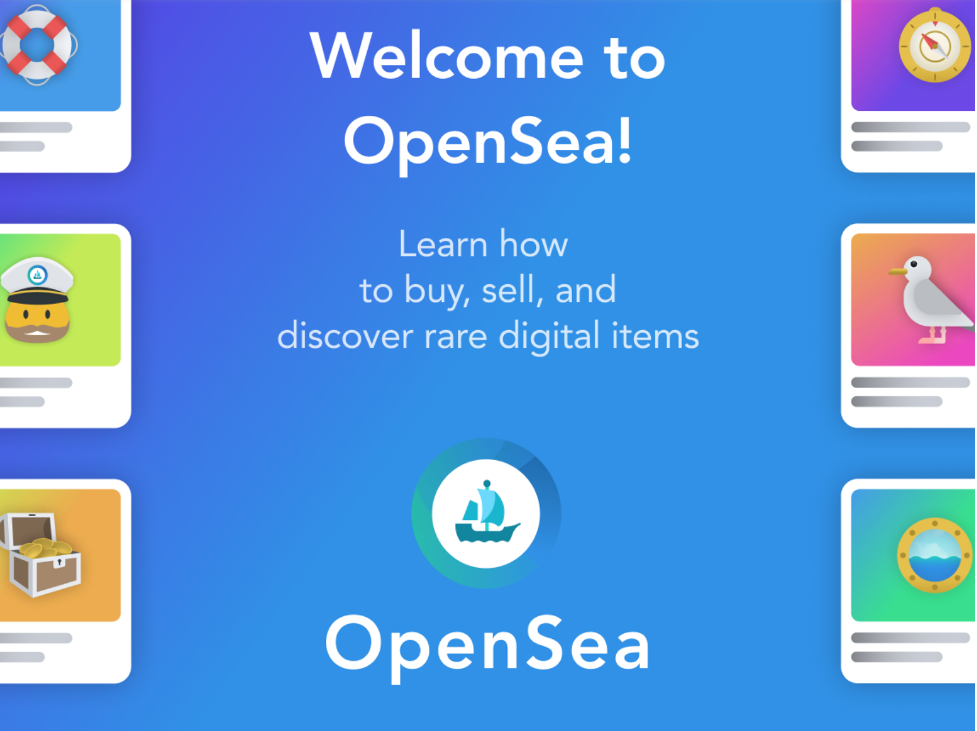
The first time you visit OpenSea, it can seem a bit overwhelming. So you can start with a simple search for things like in-game assets, digital art, or maybe you just want to poke around and explore.
If you're interested in gaming and want to learn how to create games on the blockchain, take the Ethereum Game Programming course at Ivan on Tech Academy. Sign up and get started today!
Trading NFTs on OpenSea
Trading on OpenSea is a minimal trust operation. You don't need to trust that your counterparty will behave honestly, nor do you even need to trust OpenSea. Your transactions will rely on technology, not reputation—and on smart contracts, not third parties.
Furthermore, transactions on OpenSea are "atomic," meaning the whole deal happens or none of it does. The typical contractual agreement of "if you do this, I'll do that" occurs regardless of which party has to step out and act first.
Take eBay, for example. The buyer has to pay the seller before they ship the goods. Whereas on OpenSea, both seller and buyer make a binding promise to transact at a specific price. When the promises pair up with each other, the deal takes place in a single transaction. If the deal goes sour, it's like it never happened, and neither party is left holding the bag.
That's because OpenSea uses what's called the "Wyvern Protocol." This protocol is a suite of smart contracts that have been audited and battle-tested in real-world usage. The Wyvern Protocol enables users to swap state changes such as an NFT ownership state for a cryptocurrency ownership state. So, when a seller sells an NFT, it transfers to the buyer instantly.
Web 3.0 Wallets
To participate in OpenSea or any NFT marketplace, you will need a wallet like Metamask.
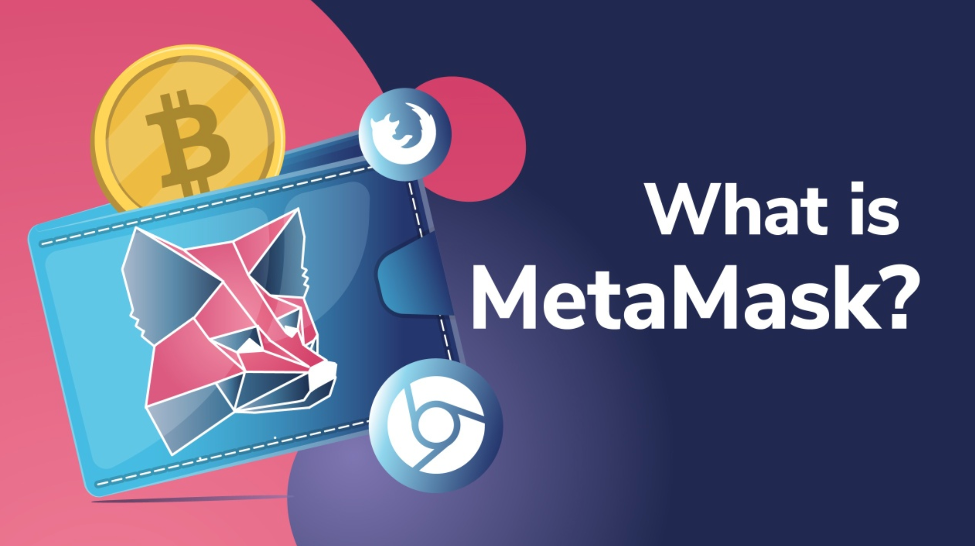
Think of your wallet as a tool to interact with the blockchain and something you'll need to buy and sell on OpenSea as well. But understand that OpenSea does not take possession of your assets. It merely provides the infrastructure for peer-to-peer exchanges. So, while OpenSea stores supplemental information on its servers, it doesn't store your NFTs. An address on the blockchain owns your NFTs, and you own the address via your private key or seed phrase.
Connecting to OpenSea
After setting up your wallet, it's time to connect to OpenSea and unlock it. Then you can see any owned assets on your OpenSea account page. Just make sure to have some ETH to pay for your items and gas costs.
For simplicity’s sake, when we're talking about the Ethereum network, we'll simply write "Ethereum." But we'll use "ETH" as the ticker symbol when talking about the Ether cryptocurrency. ETH is used to pay for gas fees and is the default currency on OpenSea.
Searching for NFTs on OpenSea
The "Browse" page is the heart of OpenSea when looking for items to buy. If you know the item's name, you can type it into the search bar. Otherwise, you can use various sorting and filtering options as needed.
The top collections and trending items default to the top spot of the search results. However, you can refine the sort options by "Recently Listed," "Expiring Soon," "Highest Price," "Most Viewers," and so on. There are several filters as well. You can filter by collection, by currency, and by shareable traits. To sum up, there are lots of options to help you search.
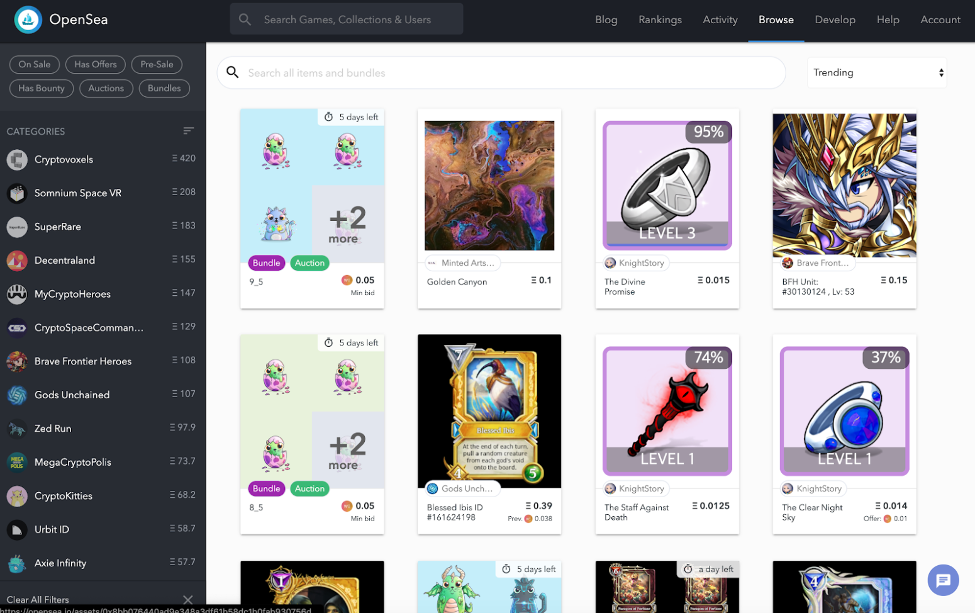
Status Pills on OpenSea
OpenSea has six special "status pills" located at the top of the sidebar.
- On Sale
OpenSea shows many items that are not for sale. So, if you're a buyer, not a peruser, click the "On Sale" pill so that only currently listed items for sale appear.
- Has Offers
When you click this pill, it will limit the search results to items that already have offers.
- Pre-Sale
Clicking this pill filters the search for pre-sale items. Buyers looking for in-game items that developers are selling before a game is released will be interested in this option.
- Has Bounty
Users can earn bounties by referring others to OpenSea listings.
- Auctions
This pill shows items on active English auctions (see below).
- Bundles
This pill filters for listings with multiple items.
You should be able to find what you're looking for with the search, sort, and filtering mechanisms. Moreover, if it's your first time buying, a good tip is to start with something inexpensive. That way, if anything goes wrong, you won't be painfully out of pocket. Because once you click the "Confirm" button, you're committed to the purchase.
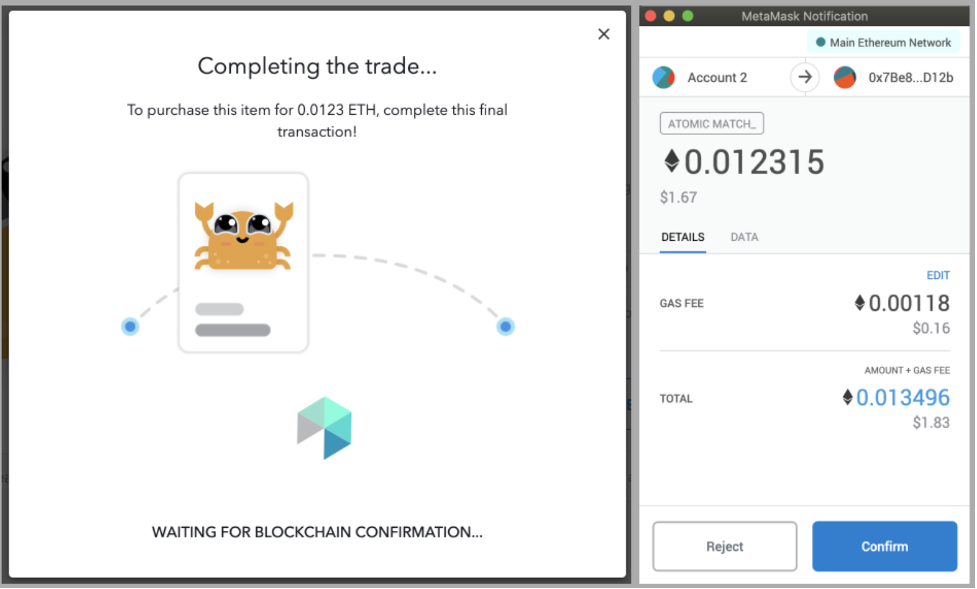
Buying NFTs on OpenSea
Before you can buy anything, you'll first need to convert your ETH to Wrapped ETH (wETH). The reason for wrapping ETH is because of interoperability issues. We'll cover wETH in future articles. For now, just know that wETH is an ERC-20 token pegged to ETH. The good news is you don't have to go to a centralized exchange or a DEX to convert between ETH and wETH. You can perform this operation right on OpenSea.
Once you have your wETH, you can pick an NFT and place your bid. You can follow the auction, and just like on eBay, if you're the highest bidder at the auction's end, you get the NFT.
OpenSea will handle the transaction from here and transfer the funds and NFTs. If you set up an email in your account settings, OpenSea will notify you that you won the auction.
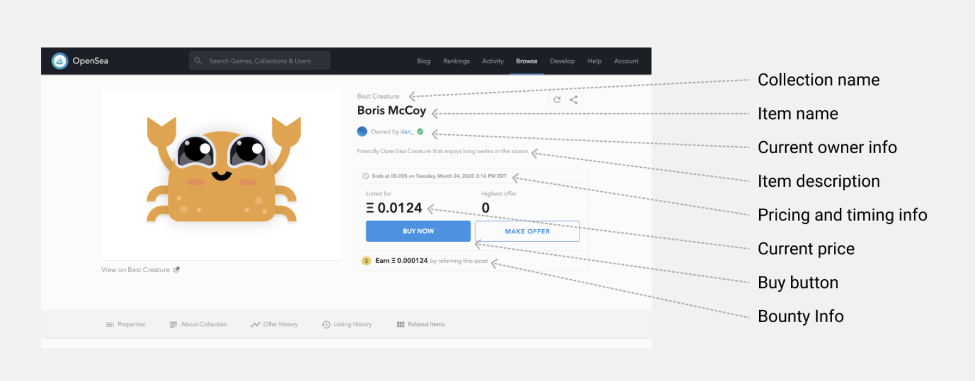
OpenSea Bundles
Most buyers and sellers on NFT marketplaces deal with single items. However, sellers can bundle up to 30 items in a listing. This cap at 30 items has to do with gas limits, Ethereum blocks, trust minimization, and single transactions. But like with single listings, you can scroll down the page to add the title, description, and price. Also, when you add values to the ending price and expiration dates, you are changing a Fixed Listing to a Dutch auction (see below).
Bundles are a popular way for sellers to drive revenue, and these types of sales are growing steadily.
OpenSea Listings
When you're ready to sell, there are three options for listing your items.
- Fixed Price Listings
This listing is the typical "buy it now" scenario similar to an Amazon listing. The seller sets the price and keeps the item listed until it's purchased or the seller decides to cancel it.
- English Auction Listings
When people hear the words "English auction," they might think of a snobbish art auction. But an English auction is simply like an eBay auction. A seller sets a minimum price and hopes the bids climb so that he/she can accept the highest one.
Sometimes a good strategy is to start the bidding at $0 to get buzz going amongst buyers. OpenSea also offers the reserve price feature to prevent a listing from selling too low. Regardless, sellers remain in control. They can accept the highest bid whenever they're ready to sell.
- Dutch Auction Listings (Declining Price Listings)
To set up a Dutch auction, sellers need to set a starting price, an ending price, and a duration. Here, the strategy is to establish a price higher than the market value and let the price decline over time. This type of auction started in the 17th-century Dutch flower auctions, hence its name. Once the price lowers to meet a buyer's valuation, they can snatch it up instantly. The strategy is to get the sale while the item is still above market price.

Selling Strategies on OpenSea
As far as selling strategies go, Fixed Price Listings and Dutch auctions are typically best for selling lower-ticket items. On the other hand, higher-priced items tend to do better in English-style auctions. Regardless of which type you choose, the process is the same - you select your item and click the "Sell" button.
OpenSea also offers gas-free transactions when the highest bidder gets an NFT on an English auction. Neither buyer nor seller has to pay the gas to execute these transactions—although one has to wonder how long this will continue with the expensive gas costs on Ethereum presently.
Also, even though your listing is public by default, you can change it to private by toggling the privacy switch. It will still be visible to the public, but only the specified address can buy it.
Neither are you locked in after listing on the OpenSea NFT marketplace. There are options to cancel the listing, reduce the price, or add another listing.

OpenSea Fees and Currencies
- Fees
OpenSea boasts that they have the lowest fees in the NFT space. They take 2.5% of the sales price. This fee is low in comparison to other platforms that take up to 7.5%. Also, there is no service fee for buyers, while others charge up to 3% on top of the sale price. Furthermore, traditional auction websites are known to take up to 12% of profits.
- Other Marketplaces
If you have NFTs from other marketplaces, you can still list them on OpenSea so long as they're in your wallet.
- Custom Currencies
OpenSea has over 200 payment options available. You can change the crypto you'll accept when selling—this includes stablecoins. As mentioned, ETH is the default, and OpenSea converts ETH to wETH, but other tokens are available:
- DAI and USDC stablecoins.
- wBTC, which is an acronym for Wrapped Bitcoin.
- MANA, which is Decentraland's in-game currency.
- REVV and SAND are also in-game currencies.
- MEME, which is part of the Meme collection.
- WHALE, which is a social token.
- Customized ERC20 tokens can also be added as an alternate payment option.
The OpenSea team works hard to keep their users from getting ripped off. Well-known accounts with a positive track record get a blue checkmark next to their collections. They also add extra layers of verification with creator addresses posted above item descriptions. Users can also flag fake and inappropriate NFTs.
The Future of OpenSea and NFTs
NFT use cases are growing and appear to be limited only by the imagination. So far, those getting the most attention are in-game items, art, collectibles, virtual worlds, and tokenized real-world assets. But more things are sure to come, especially as the sector further integrates with decentralized finance (DeFi). More integration means more NFT asset classes.
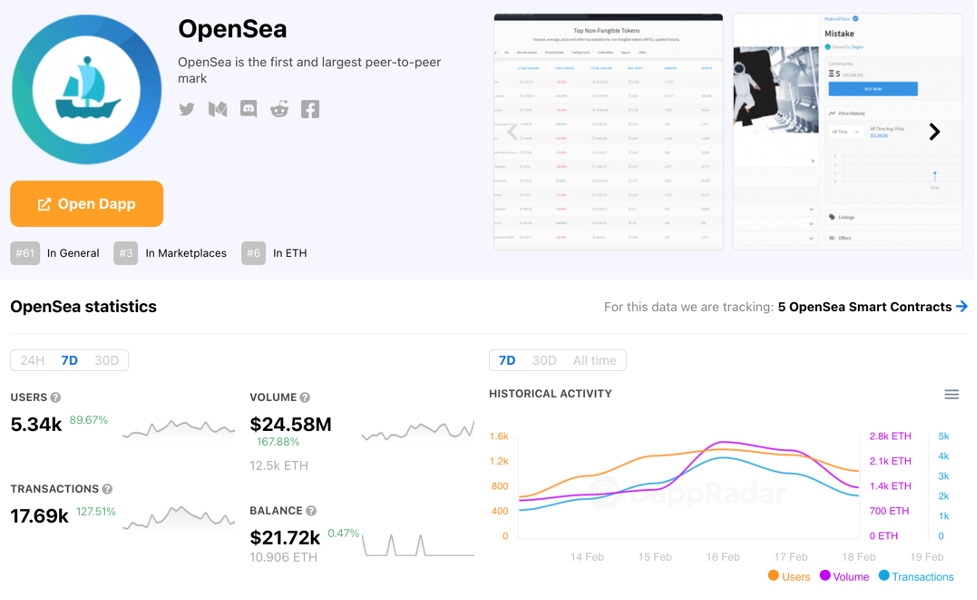
In summary, with all the attention and new projects pouring into the NFT ecosystem, 2021 will surely go down as a pivotal year. It only stands to reason that the top NFT marketplaces like OpenSea, Rarible, and Nifty Gateway (the Winklevoss twins' acquisition), are poised to prosper.
If you want to work in the NFT ecosystem or just learn more about it, you'll first need to develop a strong foundation in crypto. Why not start with the Crypto Basics Course? Or check out all the blockchain courses at Ivan on Tech Academy and get started now!
Author: MindFrac
